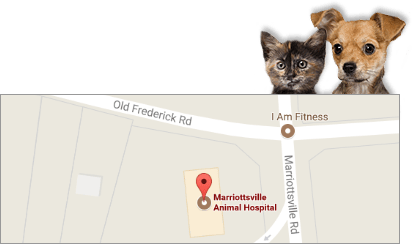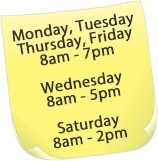Did you know that up to 90% of dogs over the age of three have gum disease? Fido might suffer from a variety of dental problems as well. These include misalignments, abscesses, infections, and cracked or broken teeth. Dental treatment is a vital element of your pet’s general care regimen. Unfortunately, it is often neglected. Brushing your pooch’s teeth does not have to be difficult or time-consuming, and it is certainly not expensive; but it can have a significant impact on Fido’s dental health. In this article, a local Ellicott City, MD veterinarian shares some tips for brushing your pet’s teeth.
What Percentage Of Dog Owners Brush Their Dogs’ Teeth?
Certainly not as many as we would like. According to Ipsos, who conducted a poll on this, only approximately 8% of dog owners clean their pets’ teeth.
Fido fared better than Fluffy: only approximately 4% of cat owners brush their cats’ mouths. (To be fair, cats aren’t always cooperative with this.)
Can I Use Human Toothpaste On My Dog?
That would be a definite no on this one. Many of our toothpastes contain ingredients that are unsafe for dogs, such as birch sugar (xylitol). Plus, your canine companion will most likely prefer having toothpaste designed specifically for him. Many doggie toothpastes come in flavors that Fido relishes, such as chicken or beef. You’ll have a much simpler time if your cute pet enjoys his toothpaste!
Also, do not use a human toothbrush on Fido. They are not made for his mouth. Use a dog toothbrush instead. If you like, you can get thumb toothbrushes.
What If My Dog Won’t Let Me Brush His Teeth?
This really should be a part of Fido’s basic dog care. However, many pups aren’t used to it. Training will become more difficult once your pet reaches adulthood. If you’ve adopted an adult pup that isn’t having it, you could be better off using the other options we suggested above, such as dental flakes. Consult your veterinarian for specific guidance.
Should You Brush Your Dog’s Teeth?
Brushing is as good for dogs as it is for humans. It helps eliminate food particles and plaque, and can prevent tartar from forming. That’s really important! Like with people, gum disease and tartar buildup go hand in hand—or, in this case, hand in paw. As tartar accumulates, it begins to push beneath the gums. This eventually leads to the formation of small pockets that serve as breeding grounds for bacteria. The infection will eventually cause gum and bone loss.
This is more than simply aesthetics. Gum disease has been connected to several major medical conditions, including heart disease. This is because the infection might spread from your pet’s mouth to his essential organs.
How Do I Get My Pooch Used To Having His Teeth Brushed?
This will be easier if you begin while little Fido is still young. The most effective strategy is for your puppy to grow up believing that this is normal for dogs. You can still teach an adult to accept a toothbrush, But it might take longer.
First, gently touch your dog’s teeth and gums with your finger. Do this while you’re petting him so he associates it with something positive—in this case, receiving affection. Then, praise your canine friend and give him a delicious reward.
The next step is to incorporate some dog toothpaste. Put a little on your finger or toothbrush. Again, give snacks and praise. Do this every day for a time, until your canine companion becomes used to it. Then, you can incorporate the doggy toothbrush.
What If My Dog Can’t Stand Having His Teeth Brushed?
In the end, you really can’t force something like this. You don’t want to get bitten or make your dog afraid of being touched! Even the sweetest puppy might become anxious in situations like those. If your dog isn’t having it, there are other things you can do to keep his teeth clean.
This list includes things like dental rinses, dental flakes, dental chews, and dental-formula food and treats. (Tip: Try using dog toothpaste on a Nylabone. Then let your canine companion have at it!)
How Frequently Should I Clean My Dog’s Teeth?
Ideally, Fido’s teeth should be brushed twice a day. However, even once each day is acceptable. You don’t even need to clean your furry friend’s entire mouth at once. Just complete one quadrant and keep rotating. Your canine companion will still benefit. Once you and your pet have this down, it should just take a minute or two.
How Do I Know If My Dog Has Dental Problems?
Fido can’t tell you if his teeth hurt, so keep a lookout for warning signs.
Here are some of the more common ones:
Drooling: We know that certain dogs are naturally slobbery. If you own a Saint Bernard, you can generally anticipate Fido to be a little sloppy. If your dog isn’t regularly drooling but has suddenly started leaving puddles on the floor, he or she may have a dental problem. Ropy or bloody drool might also be a warning sign.
Swelling Of The Mouth, Face And Head: Swelling is never good, but swelling on the head is especially alarming. This usually suggests an infection, which is exceedingly dangerous so near to the brain.
Reduced Interest in Play: Fido uses his mouth to play, so it only stands to reason that dental concerns are likely to reduce his enthusiasm for his favorite hobbies. If your dog suddenly loses interest in playing fetch or tug-of-war, he may have dental problems.
Bleeding Gums: You may not see any blood on your dog’s gums. Look for crimson splotches on Fido’s toys, plates, and chews. Bleeding gums are frequently indicative of oral problems, such as gum disease.
Tartar Buildup: Is there brown or yellow muck on your pup’s teeth? If that’s the case, he could benefit from a thorough cleaning. This will allow the gums to recover and perhaps reattach.
Bad Breath: Man’s Best Friend is known for many excellent attributes, yet minty-fresh breath is rarely (okay, probably never) mentioned among them However, your pet’s breath is not supposed to damage houseplants. Extremely poor breath may be an indicator of other medical conditions. For more information, consult with your Ellicott City, MD veterinarian.
Grumpiness: Anyone who has ever had a toothache will attest that dental troubles do not improve one’s attitude. Your pet may appear unusually gloomy. He may also withdraw and spend more time alone than with his humans.
Changes In Eating Habits: Chewing on a hurting tooth isn’t very enjoyable. You may notice that your pet takes longer than usual to finish their dinner. Fido may also spill food from the side of his mouth. Dogs with dental difficulties may exhibit a pronounced preference for softer food and treats. In severe circumstances, kids may not consume anything at all. This, of course, can result in major health problems.
Contact your Ellicott City, MD immediately if you notice any of these red flags.
Schedule an Appointment at Your Ellicott City, MD Pet Hospital
Do you have any questions about your dog’s health or care? Do you know or think that your canine pet has dental problems? Contact us, your local Ellicott City, MD hospital, at any time!





